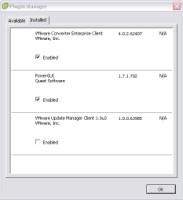

What is PowerGUI and how can it help me?īefore you think that I am trying to sell you some kind of commercial tool here, let me first tell you that PowerGUI is completely free, as are their PowerGUI libraries and community forums. While that is “nice” and the way that most admins use PowerShell this command-line interface can be daunting for those new to PowerShell or even new to any kind of command line interface. You will see your PowerShell command line that looks like this: In Windows 7, just go to the Start menu, Administrative Tools, then to Windows Powershell Modules. Prior to that OS, you will need to install it from the Microsoft Script Center homepage. If you are running Windows 7, PowerShell 2.0 is already included and installed. To me, the cool thing about PowerShell is that it can be used across so many different Windows OS features and supported 3rd party applications – allowing you to control and manage your entire Windows server (both OS and apps). These administrative tasks can be automated to run at specific times or be initiated from other applications to perform some task. Those administrative tasks could be related to Windows network management, Active Directory, Hyper-V, or even 3rd party programs like VMware (if those programs support it). NET and it is used to perform administrative tasks on local and remote Windows systems.

These are easy questions to answer and I am confident that you will see the obvious usefulness of PowerShell once it’s explained.Īccording to WikiPedia, PowerShell is an “extensible automation engine from Microsoft, made up of a command-line shell and associated scripting language”.


If you are new to PowerShell you may still be asking what it is and why you need it. Recently, I came across PowerGUI, a graphical PowerShell Editor and that is what I will be covering in this article. That is easy to do but, to any new user, it is very intimidating. Sure, you can just run the PowerShell command prompt in Windows. From this course, I learned a lot about PowerShell and was excited at the thought of being able to create some myself. This course is taught by Microsoft PowerShell MVP, Hal Rottenberg (of ). Recently I was watching the new Train Signal vSphere Pro video training course covering using PowerCLI and PowerShell with VMware vSphere.


 0 kommentar(er)
0 kommentar(er)
